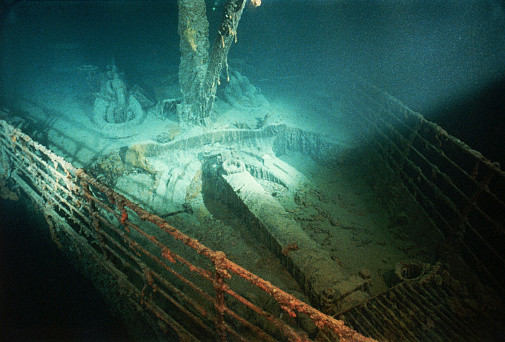
The most famous shipwreck in history has been made public in a never-before-seen way.
Deep-sea mapping has produced the first full-sized digital scan of the Titanic, which is located 3,800m (12,500ft) below the surface of the Atlantic.
It offers a distinctive 3D vision of the whole ship, allowing one to see it as though the water had been drained away.
It is hoped that this would provide fresh insight into the circumstances behind the liner's sinking in 1912.
More than 1,500 people died when the ship struck an iceberg on its maiden voyage from Southampton to New York.
"There are still questions, basic questions, that need to be answered about the ship," Parks Stephenson, a Titanic analyst said.
He said the model was "one of the first major steps to driving the Titanic story towards evidence-based research - and not speculation."
Since the wreck of the Titanic was discovered in 1985, it has been thoroughly examined. But since it's so big, cameras can only ever show us tantalizing fragments of the rotting ship in the darkness of the deep.
The new scan completely encompasses the site, giving a full perspective of the Titanic. The bow and stern are separated by around 800 meters (2,600 feet) on either side of it. The wrecked vessel is surrounded by a vast field of wreckage, BBC reported.
The deep-sea mapping company Magellan Ltd. and Atlantic Productions, who are producing a documentary on the project, conducted the scan in the summer of 2022.
They created a precise 3D reconstruction using more than 700,000 pictures from all possible perspectives.
It was the largest underwater scanning project he'd ever undertaken, said Magellan's Gerhard Seiffert, who led the planning for the expedition.
"The depth of it, almost 4,000m, represents a challenge, and you have currents at the site, too - and we're not allowed to touch anything so as not to damage the wreck," he explained.
"And the other challenge is that you have to map every square centimetre - even uninteresting parts, like on the debris field you have to map mud, but you need this to fill in between all these interesting objects."
The scan shows the scale of the ship. It also shows some minute details, such as the serial number on one of the propellers.
Even one hundred years after the ship went missing, the bow, which is now coated in rust stalactites, can still be easily identified.
The boat deck is perched on top, and a gaping hole where the grand staircase previously stood offers a look into nothingness.
But the stern is a disorganized mess of metal. As the ship corkscrewed into the ocean below, this portion of the vessel fell apart.
Ornate ship metalwork, figurines, and unopened champagne bottles are among the artifacts strewn around the debris field. Numerous pairs of shoes that are resting on the silt are among the personal things that are present.
Parks Stephenson, who has studied the Titanic for many years, said he was "blown away" when he first saw the scans.
"It allows you to see the wreck as you can never see it from a submersible, and you can see the wreck in its entirety, you can see it in context and perspective. And what it's showing you now is the true state of the wreck."
According to him, analyzing the scans could reveal new information on what transpired to the Titanic on that tragic night in 1912.
"We really don't understand the character of the collision with the iceberg. We don't even know if she hit it along the starboard side, as is shown in all the movies - she might have grounded on the iceberg," he explained.
Studying the stern could reveal the mechanics of how the ship struck the sea floor, he added.
The sea is taking its toll on the wreck, microbes are eating away at it and parts are disintegrating. The historical community is well aware that there is not much time left to adequately comprehend the maritime disaster.
However, the scan has stopped the accident in its tracks, allowing specialists to scrutinize every last aspect. The Titanic might yet reveal its secrets, it is hoped.
© 2025 Latin Times. All rights reserved. Do not reproduce without permission.




